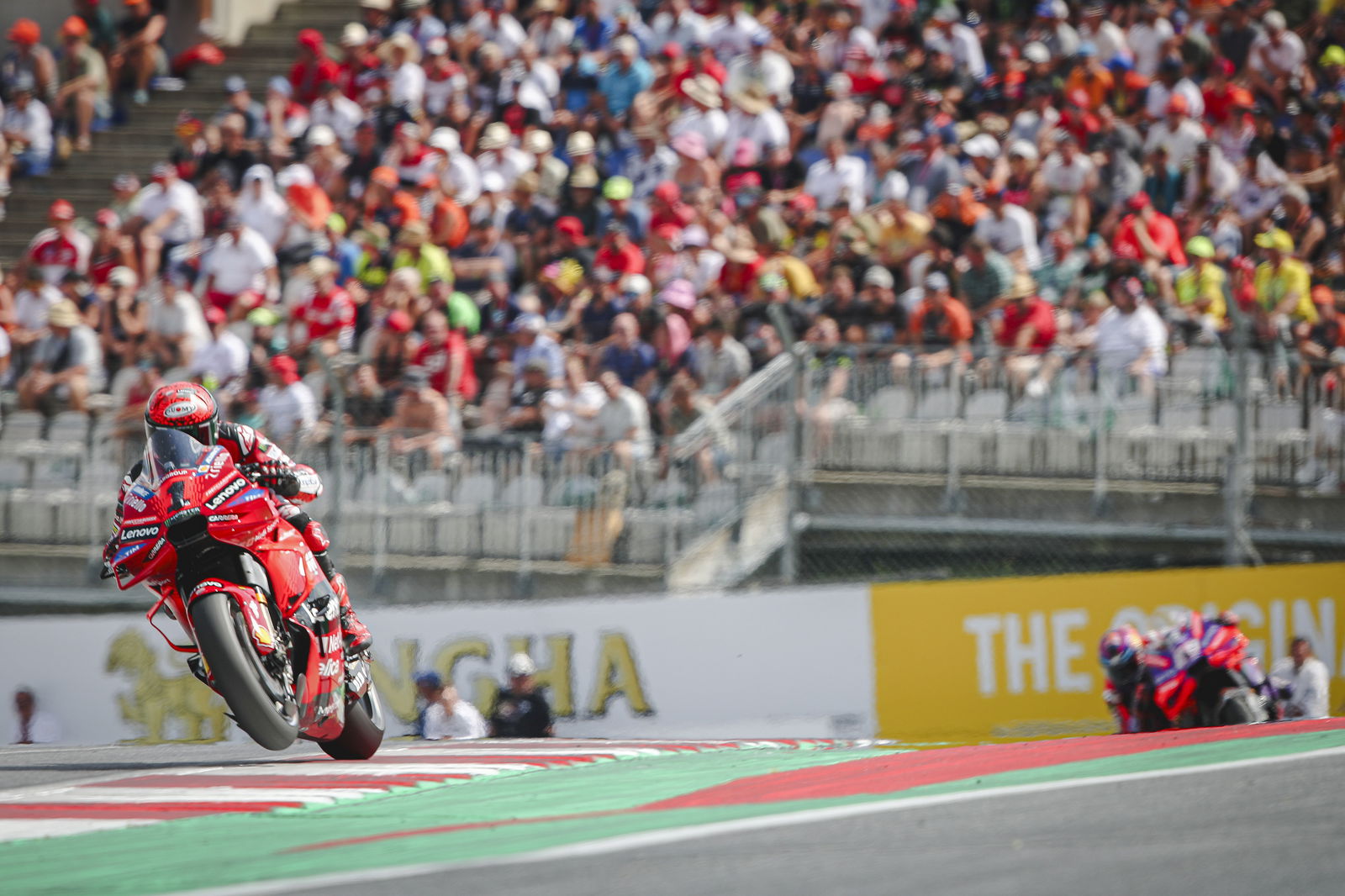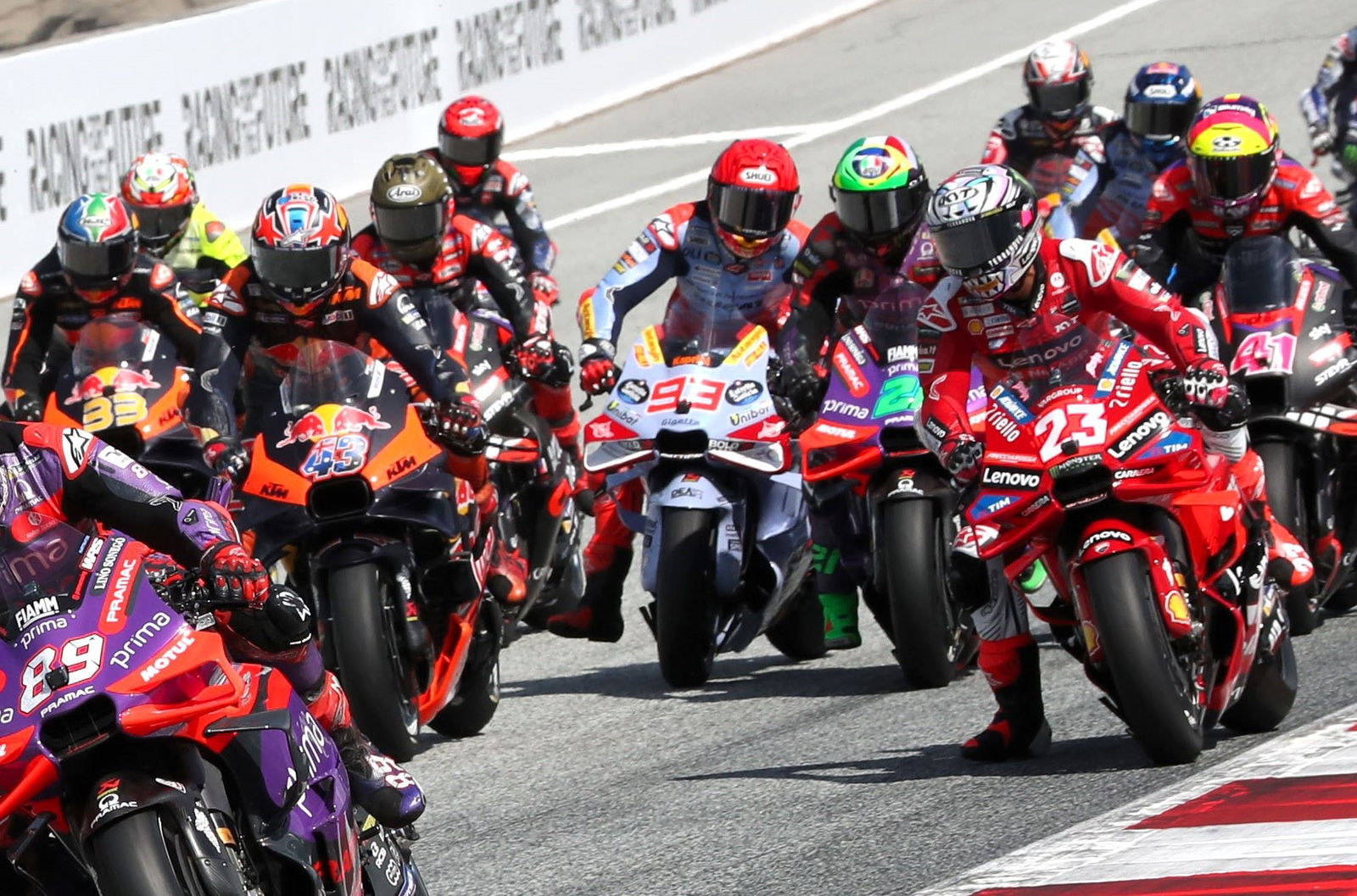Marc Marquez’s Austria woe proves MotoGP ride height ban can’t come soon enough
Ride height devices will be banned in 2027

The 2024 Austrian Grand Prix will not be remembered as one of MotoGP’s best. In fact, its humdrum procession will likely fade so far into obscurity as to one day win someone a pub quiz.
Not every race can be exciting, but neither should any race be as dull as that was. Social media has pointed its finger at the dominance of Ducati and its GP24. To that, you only have to look at literally any other period in history considered classic to see how feeble that argument is.
We all remember Barcelona 2009 as arguably MotoGP’s greatest race. But we conveniently forget that people were complaining how boring MotoGP was on the run up to that race and how there hadn't been a last-corner overtake in years. We also conveniently forget that title battle fizzled out and only the same four names were consistently on the podium.
You can’t blame Gigi Dall’Igna’s crew for simply doing a better job than anyone else. They all work to the same rules, and even then Ducati’s rivals all have concessions of some kind to allow them a leg up in closing that gap. Not that any of them in 2024 had done so.
If you want to direct your anger at anyone, then blame Ducati’s rivals for simply underperforming. The results sheet for the Austrian GP reads like one of old, with the top 10 covered by a whopping 30.2s.
It’s a far cry from the Austrian GPs we used to see, when a last-corner battle between Marc Marquez and Andrea Dovizioso was almost a given. Even during the COVID years Austria provided thrillers.
So, is Ducati really to blame for the last couple of years of boring Austria races? Of course it’s not.
Problems with ride height devices?
Arguably, the most exciting thing about the 2024 Austrian GP was Marc Marquez, who is on… a Ducati. Albeit a 2023-spec one.
But the eight-time world champion enjoyed one of his best weekends in terms of pace of the year on the Gresini-run GP23. A crash in the sprint denied him a guaranteed podium, but he was a threat for the grand prix before the wheels came off his wagon before the lights went out.
The catalyst for his issues stemmed from a broken tyre valve, which led to a hasty visit by his mechanics to Michelin’s awning in the paddock to have his race tyres put onto a new rim. They were successful, but the time spent disconnected from the warmer meant his medium front tyre had cooled down.
In a bid to get some temperature back into, Marquez put some force into his front brake on the approach to the startline. The problem was, this disengaged his front holeshot device and he couldn’t get it set again. He got a poor launch as a result and then made contact with Pramac’s Franco Morbidelli, which sent him back from third on the grid to 13th.
Marquez recovered to fourth at the chequered flag and displayed pace good enough to challenge at least for the podium.
“We cannot ban a device [early] because I did a mistake. It’s the same for everybody and in the past other riders have done it also," Marquez said when asked about banning ride height devices earlier than 2027.
“It’s true that now we have many things [to operate] on the bike,” he added. “When some riders arrive from Moto2 they say, ‘We have so many things to do’. But today, with that chaos we had with the front tyre, I put more attention on getting the tyre temperature up and I was less concentrated on the front device.
“I engaged it, but thinking about the front temperature, I disengaged it again by putting load and pressure to increase the temperature. It is what it is.”
Marquez has long been a detractor of what he sees as the ‘F1-ification’ of MotoGP bikes, with increased reliance on aerodynamics and the evolving nature of ride height devices. He feels they make riding less instinctive, leaving little room for a rider to make the difference with their talent.
The Red Bull Ring is arguably one of the circuits where the negative effects of these devices is most prominent. The layout of the track puts an emphasis on low-gear acceleration, which is what the ride height devices help with by keeping the centre of gravity low to stop the front wheel pawing the air.
The effect, though, is that everyone is more or less exiting corners in the same way. Throw in the tyre pressure battle riders now face under the current regulations - something exacerbated by the high levels of downforce bikes produce now - trying to claw back any advantage on a track like Red Bull Ring on the brakes becomes harder.
Marquez’s issue off the line with his holeshot device was also dangerous. With everyone able to start so well, any sluggishness on the launch instantly swallows you into the pack.
The contact with Morbidelli - while rightly deemed a racing incident - could have had terrible consequences had both not stayed onboard their machines.
There have been numerous incidents of riders’ devices not disengaging through the first few corners of a race too.
From an entertainment perspective, Marquez’s problems denied us a potentially more entertaining podium battle. While it’s fair to argue that it was his mistake, he was forced into by the situation with his front tyre. After all, a good launch means nothing if your front tyre is so cold you just skittle riders at first touch of the brakes.
As with any can of worms, once opened, trying to contain the contents is almost impossible. MotoGP has done a good job in getting the manufacturers to agree with stripping back aero and banning outright all ride height devices for the 2027 regulations change.
But that still leaves two more years of racing being ruined by the current regulations. Perhaps accelerating the ban on ride height devices is something the rulemakers should consider now…


.jpg)